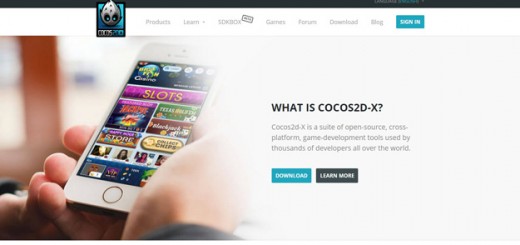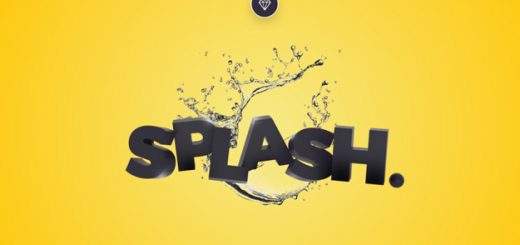Native mobile apps usually work faster, smoother and these results in a better user experience. And, web designers/developers always look for new ways to catch this performance with web technologies.
Building mobile web apps already became pretty easy with user-friendly and high quality frameworks, but choosing the right one for building apps not just spares the time but also helps you to finish the task in certain deadline.
Therefore in this article we have compiled a list of 12 Best Mobile Frameworks you should consider in 2016 that would help developers to create innovative, useful and entertaining apps for mobile lovers.
If you are aware of any other useful mobile frameworks which you think is best fit for the list then please let us know by posting a comment below, we would to add it up in the list.
Read Also–
Best Mobile App Development Frameworks for Developers
12 Best Mobile App Testing Frameworks
25 Free WordPress Theme Frameworks
A Roundup of Best PHP, HTML5 and CSS Frameworks
1. Redbeard
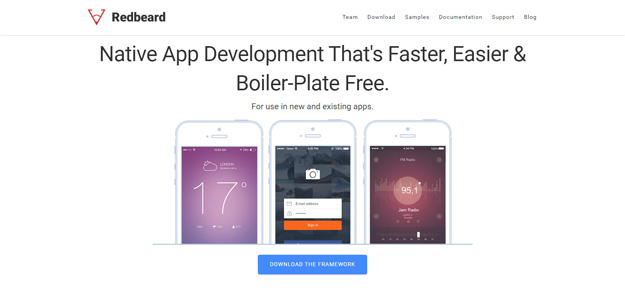
Redbeard makes it faster and easier to create native apps without a boilerplate. It’s a complete framework with tons of components.There’s a whole variety of ready to use components for some of the most commonly needed functionality. Every component is fully themable via our awesome theming engine. No need for wrapper apps or wrapper frameworks. Redbeard is fully 100% native development framework that works with Objective-C and Swift across the whole iOS suite.
2. Weex
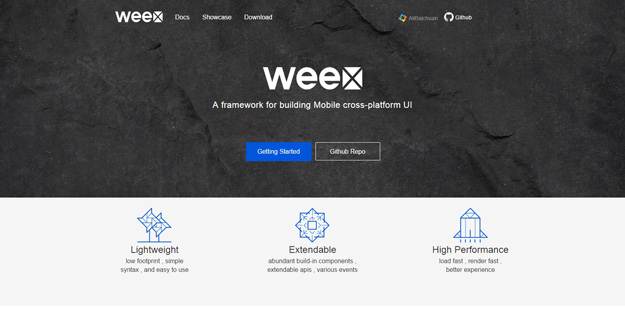
Weex is a mobile cross-platform UI framework. It’s lightweight, high-performance, and extendable. Weex is from Alibaba to build mobile apps with just HTML, CSS and JavaScript. It comes with Modules, UI components, its own DevTools and CLI that is designed towards mobile environment and to speed up development.
3. Rikulo
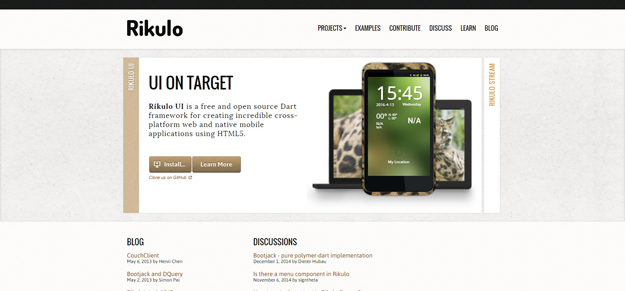
Rikulo UI is a Dart framework for creating cross-platform web and native mobile applications with HTML5. It uses a structured UI model and offers a responsive UX across desktop & touch devices.
4. A Frame
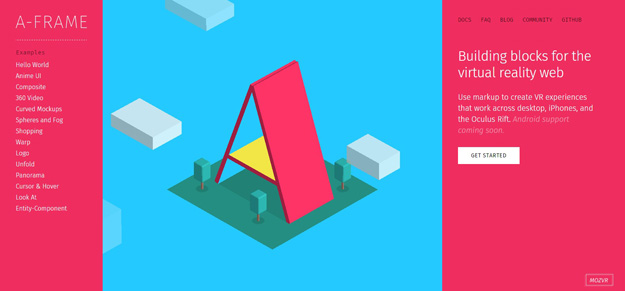
A-Frame is a framework for building things for the virtual reality web. You can use markup to create VR experiences that work across desktop, iPhones, and the Oculus Rift.
5. Onsen UI

Onsen UI is a mobile framework that includes Javascript and CSS frameworks for HTML5, PhoneGap & Cordova apps. It offers a large selection of Web-based UI components, and responsive layouts for smartphones and tablets, among other features.
6. Tabris.js
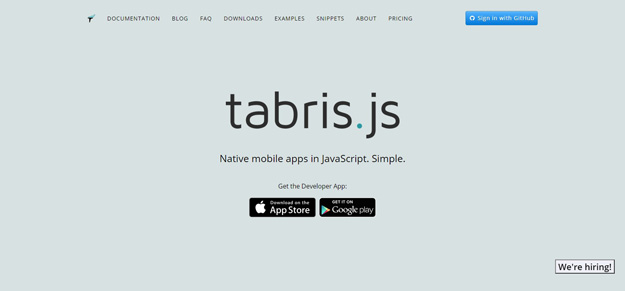
Tabris.js is a mobile framework that makes it simple to create native apps for iOS and Android in JavaScript. It doesn’t use WebViews for rendering UI, and instead creates native widgets on the mobile platform via a JavaScript-to-native bridge. This also enables the quick develop / deploy cycle that you know from web development.
7. Rad.js
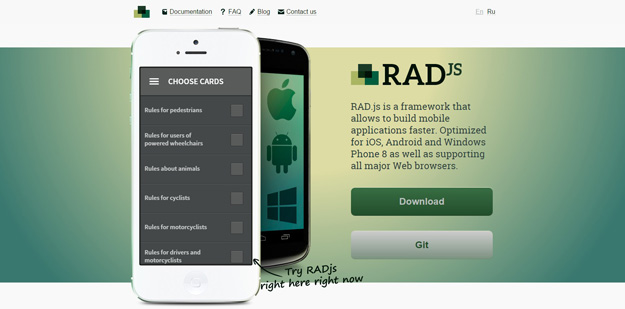
RAD.js is the solution to the problem of creating apps with multiplatform capabilities and native-like responsiveness, performance, and usability. It is a toolkit created by MobiDev experts for business needs of mobile startups, well-established businesses, and directly for software developers.
8. Konva
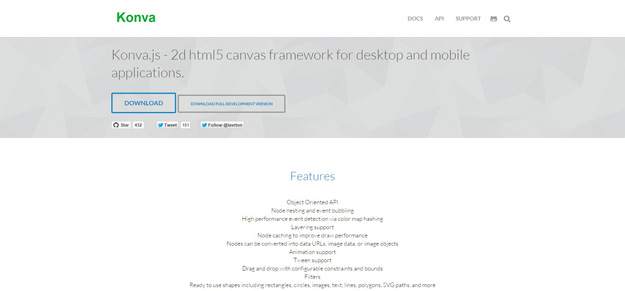
Kanva is a 2D HTML5 canvas framework for creating desktop and mobile apps. It has an object oriented API, layering support, tween and animation support, filters, and custom shapes, among other features.
9. Mootor

Mootor is an HTML5 framework for developing mobile apps. It’s minimalist and works on multiple platforms, including iOS, Android, and others.
10. TouchstoneJS
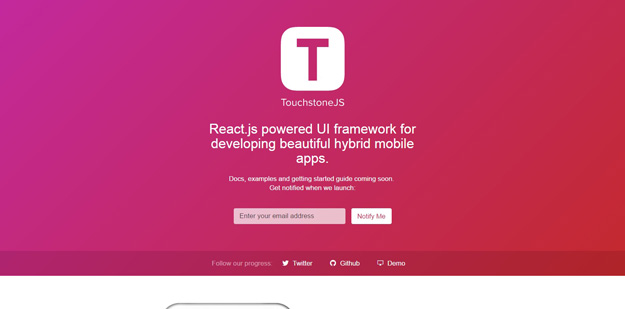
TouchstoneJS is a UI framework powered by React.js for developing hybrid mobile apps. It includes form components, navigation, transitions, native touch behaviors, and much more, with more features on the way.
11. Pikabu

Pikabu is a framework for creating off-canvas flyout panels. It has simple markup, supports native scrolling, and is fully customizable.
12. Clank
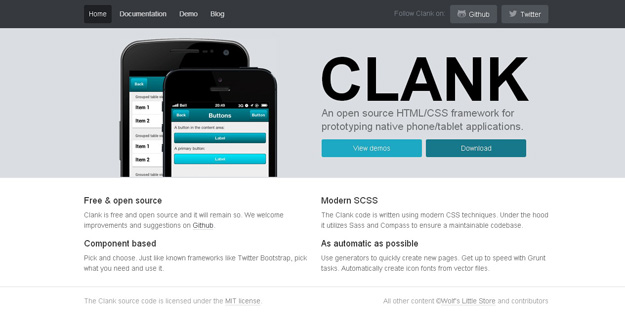
Clank is an open source HTML and CSS framework for prototyping native mobile and tablet apps. It uses modern CSS techniques, with Sass and Compass, and its component based so you can pick and choose what you need.

